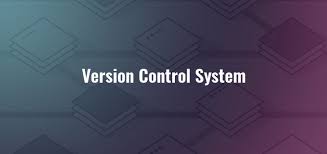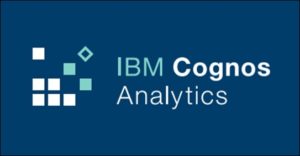Description
Introduction
Denodo is a leading data virtualization platform that allows organizations to access, integrate, and manage data in real-time without the need for physical replication. Denodo Platform Overview: Building Scalable Data Solutions is designed to provide developers and data professionals with a deep understanding of how to leverage Denodo’s capabilities to build scalable, high-performance data solutions.
In this course, you will learn how to connect to multiple data sources, create data services, and implement real-time data access and governance without duplicating data. The Denodo platform’s flexibility allows businesses to integrate disparate data sources from cloud, on-premises, and hybrid environments. By the end of the course, you will be equipped to design, deploy, and manage data solutions using the Denodo Platform.
Prerequisites
- Basic understanding of data management concepts.
- Familiarity with data integration and ETL processes.
- Experience with SQL and database technologies is helpful.
- Knowledge of cloud platforms or on-premises systems is beneficial but not mandatory.
Table of Contents
- Introduction to Denodo Platform
1.1 What is Data Virtualization?
1.2 Overview of Denodo Platform Features
1.3 Key Benefits of Using Denodo
1.4 Denodo Architecture Overview
1.5 Setting Up and Configuring the Denodo Platform - Data Integration with Denodo
2.1 Connecting to Data Sources: Databases, Files, and Web Services
2.2 Importing Data with Denodo
2.3 Data Federation: Bringing Data Together
2.4 Working with Structured and Unstructured Data
2.5 Managing Data Sources and Connection Profiles - Data Virtualization and Querying
3.1 Understanding Data Virtualization Concepts
3.2 Creating Data Views and Services
3.3 Querying Data in Real-Time
3.4 Optimizing Queries and Data Performance
3.5 Data Federation vs. Data Replication - Advanced Data Integration Techniques
4.1 Using Denodo’s Data Transformation Capabilities
4.2 Implementing Joins, Unions, and Aggregations
4.3 Working with Semi-Structured and JSON Data
4.4 Data Enrichment and Data Mashups
4.5 Handling Data Quality and Data Governance in Denodo - Data Security and Governance
5.1 Security Features of Denodo Platform
5.2 Role-Based Access Control (RBAC) in Denodo
5.3 Implementing Data Masking and Encryption
5.4 Auditing and Logging Data Access
5.5 Data Lineage and Metadata Management - Real-Time Data Access and Performance Tuning
6.1 Setting Up Real-Time Data Access
6.2 Caching Data for Improved Performance
6.3 Managing Data Query Latency(Ref: NetSuite Technical for Developers: Building and Integrating Solutions)
6.4 Optimizing Denodo Data Sources and Views
6.5 Troubleshooting Data Access Issues - Cloud and Hybrid Integrations with Denodo
7.1 Connecting to Cloud Data Sources: AWS, Azure, GCP
7.2 Hybrid Data Architecture with Denodo
7.3 Cloud Data Warehousing and Integration
7.4 Scaling Denodo in Cloud Environments
7.5 Best Practices for Cloud Data Integration - Denodo Data Services
8.1 Creating RESTful Web Services with Denodo
8.2 Exposing Data via APIs and SOAP Services
8.3 Integrating Denodo with BI Tools (Tableau, Power BI)
8.4 Using Denodo for Reporting and Analytics
8.5 Managing and Deploying Data Services - Denodo Monitoring and Administration
9.1 Administering Denodo Platform Components
9.2 Monitoring Data Sources and Query Performance
9.3 Managing Denodo Cache and Virtualization Server
9.4 Backup and Recovery in Denodo
9.5 Automating Denodo Maintenance Tasks - Best Practices for Building Scalable Data Solutions
10.1 Designing a Scalable Data Architecture with Denodo
10.2 Implementing Data Virtualization for Large-Scale Data
10.3 Performance Tuning for Scalability
10.4 High Availability and Failover in Denodo
10.5 Cost Optimization and Resource Management - Case Studies and Real-World Applications
11.1 Case Study: Real-Time Analytics with Denodo
11.2 Case Study: Data Integration for Financial Services
11.3 Case Study: Hybrid Cloud Data Integration
11.4 Case Study: Enhancing Data Access for E-commerce
11.5 Case Study: Data Governance and Compliance in Denodo - Final Project and Certification
12.1 Project Overview: Building a Scalable Data Solution with Denodo
12.2 Implementing Data Integration, Querying, and Security
12.3 Presenting the Final Project and Solution
12.4 Preparing for Denodo Certification
12.5 Next Steps in Your Denodo Data Engineering Career
Conclusion
By the end of Denodo Platform Overview: Building Scalable Data Solutions, you will have gained the technical expertise to design and implement scalable, real-time data solutions using the Denodo platform. Whether working with on-premises data, cloud sources, or hybrid environments, you will be equipped to leverage Denodo’s powerful data virtualization capabilities to create efficient, secure, and high-performing data architectures.
With practical knowledge of data integration, querying, security, and optimization, you will be able to build data solutions that meet the needs of modern enterprises, enhancing decision-making and business agility. The skills acquired in this course will empower you to drive data innovation within your organization and establish yourself as a proficient professional in the growing field of data virtualization.










Reviews
There are no reviews yet.